Nvidia’s 2023 revenue will be almost double its 2022 revenue on the strength of its AI processors.
Intel has been the top semiconductor company for most of the last twenty-one years – except for 2017, 2018 and 2021 when Samsung was number one.
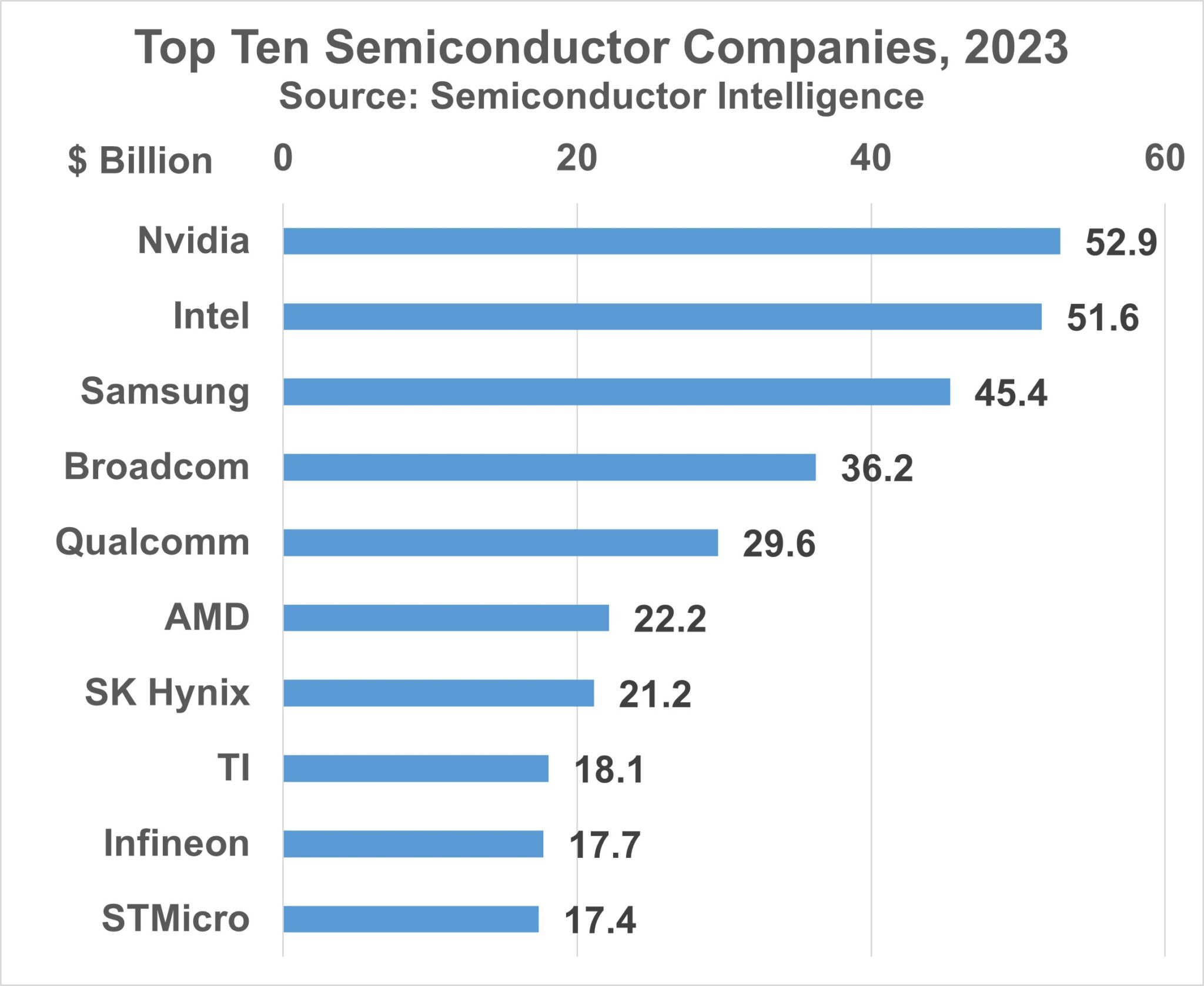
Despite the fast pace of the semiconductor industry and the numerous startup companies, the top ten companies in 2023 have all been in business at least 30 years.
Nvidia is the youngest at 30. Number four Broadcom Inc. is the result of Avago Technologies acquiring Broadcom in 2015. However, the original Broadcom was founded 32 years ago. Avago was a spin-off of Hewlett-Packard which entered the semiconductor business 52 years ago.
38-year-old Qualcomm grew to number five primarily through cellphone ICs and licensing revenues. Only Qualcomm’s IC revenues are included in the rankings. Number ten STMicroelectronics was formed in 1987 through the merger of SGS Microelettronica of Italy with Thomson Semiconducuteurs of France. The semiconductor businesses of SGS and Thomson both date back to the 1970s.
Two of the top ten companies were among the industry pioneers about 70 years ago. Texas Instruments (TI) was founded in 1930 and entered the semiconductor business in 1954. Infineon Technologies was originally part of Siemens AG, which was founded in 1847. Siemens began producing semiconductors in 1953. Infineon was spun out as a separate company in 1999.
The two South Korean companies, Samsung Electronics and SK Hynix, have over 40 years of semiconductor sales. They became dominant in the memory business after it was largely abandoned by U.S. and Japanese companies (except Micron Technology). SK Hynix was originally Hyundai Electronics which began making semiconductors in 1983. Hyundai merged with LG Semiconductor in 1999 to form Hynix, later SK Hynix.
Intel started 55 years ago and originally sold memory devices. AMD began 54 years ago producing logic ICs. Today the two companies primarily sell microprocessors, together accounting for over 95% of the market for computer microprocessors.
The relative stability of the top semiconductor companies can be seen by comparing the 2023 top ten with 1984, 39 years ago and the year the principal of Semiconductor Intelligence began in semiconductor market analysis.
Of the top ten semiconductor companies in 1984, most are still in business today in one form or another. TI was number one in 1984. Since then, TI has narrowed its focus to become primarily an analog company.
Number two Motorola split off its discrete business as ON Semiconductor in 1999. ON is now an $8 billion company and acquired industry pioneer Fairchild Semiconductor in 2016. Motorola spun off its IC business as Freescale Semiconductor in 2004.
NXP Semiconductors was split off from number seven Philips in 2006. Freescale merged with NXP in 2015. NXP is currently a $13 billion company. Number five National Semiconductor was acquired by TI in 2011. Intel and AMD were number seven and eight, respectively, in 1984. They will be number two and number six in 2023.
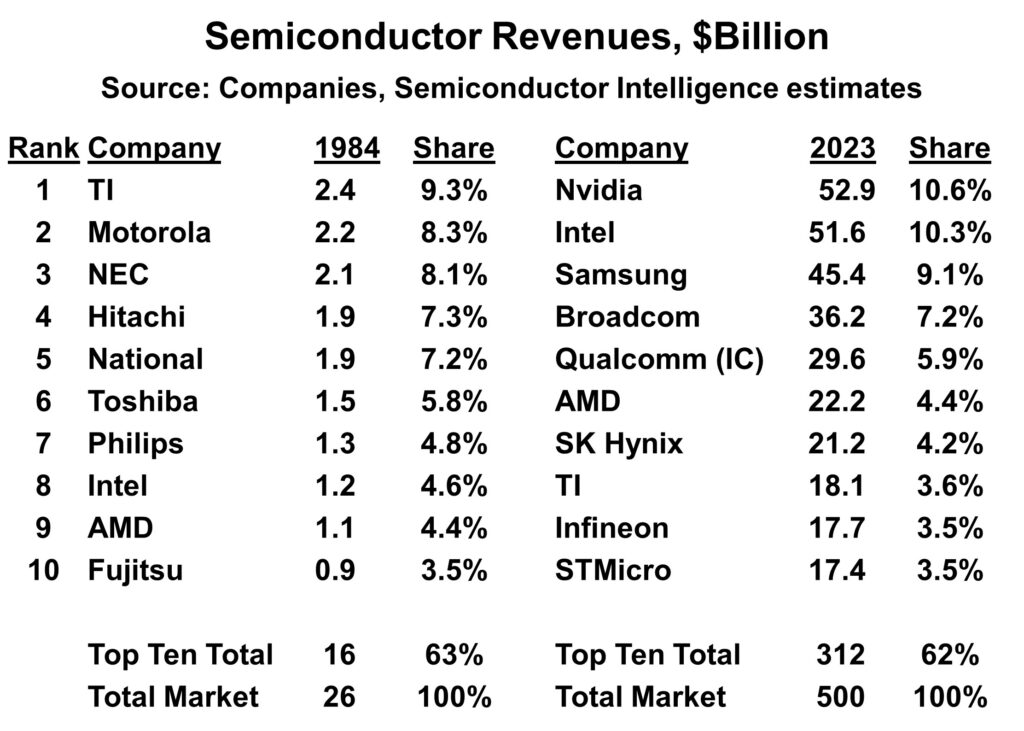
Japanese companies were strong in the semiconductor industry in most of the 1980s and 1990s, especially in memory. They were all large, vertically integrated companies. Beginning in the late 1990s these companies began spinning off their semiconductor operations.
Renesas Electronics was formed by the merger of the non-memory operations of Hitachi, Mitsubishi, and NEC. Renesas is now a $13 billion company.
NEC and Hitachi split off their DRAM businesses in 1999 to form Elpida Memory. Elpida was acquired by Micron Technology in 2013.
Toshiba spun off its flash memory business as Kioxia in 2016. Kioxia had over $11 billion in revenue in 2022. Toshiba continues to provide primarily discrete semiconductor devices.
Fujitsu divested its IC foundry business in 2014 which was later acquired by UMC. Fujitsu formed a joint venture with AMD for flash memory, Spansion. Spansion merged with Cypress Semiconductor in 2014 and Cypress was acquired by Infineon in 2020.
The relative stability of the semiconductor industry is demonstrated by the market shares of the top ten companies in 1984 and 2023. In 1984 TI had a 9.3% share. In 2023 Nvidia will have about a 10.6% share. The combined market share of the top ten companies in 1984 was 63%. In 2023 it will be about 62%. Although the top companies are relatively stable, the industry has grown from $26 billion in 1984 to $500 billion in 2023, almost a 20-fold increase.
Abonnieren fuer regelmaessige Marktupdates.
Bleiben Sie auf dem neuesten Stand der Branchentrends, indem Sie unseren Newsletter abonnieren. Unser Newsletter ist Ihr Zugang zu erstklassiger Marktexpertise.
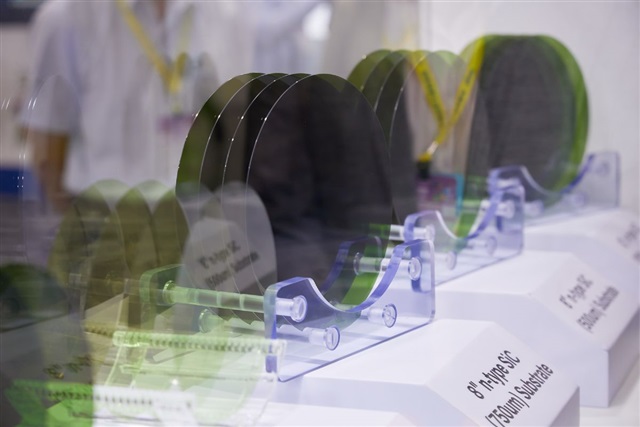
The US has initiated a Section 301 investigation into China's mature semiconductor processes and third-generation silicon carbide (SiC) semiconductors. Supply chain operators state that the increa
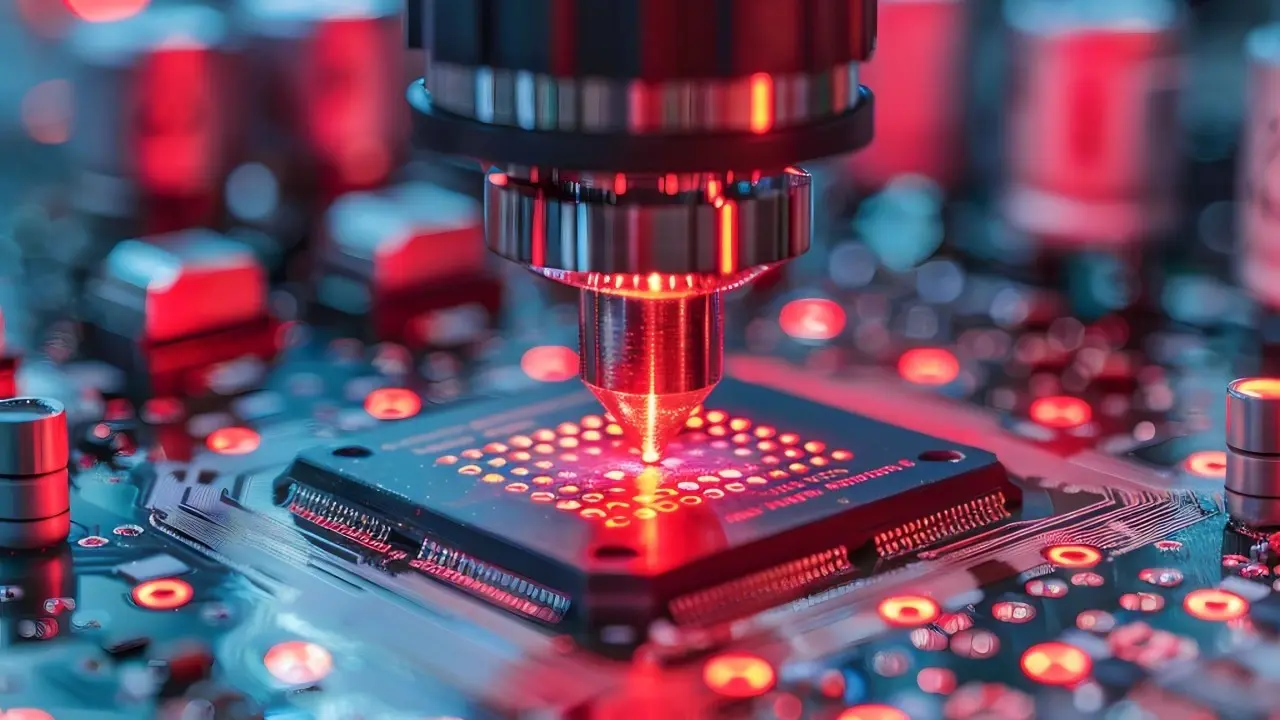
In 2025, we expect 9.5% growth in the global semiconductor market, driven by robust demand for data centre services, including AI. However, growth in other, more mature segments is expected to be stag

Taiwanese chip manufacturer TSMC has announced a $100 billion investment in the United States, aiming to build five additional semiconductor facilities.The plan was revealed by TSMC CEO C.C. Wei along
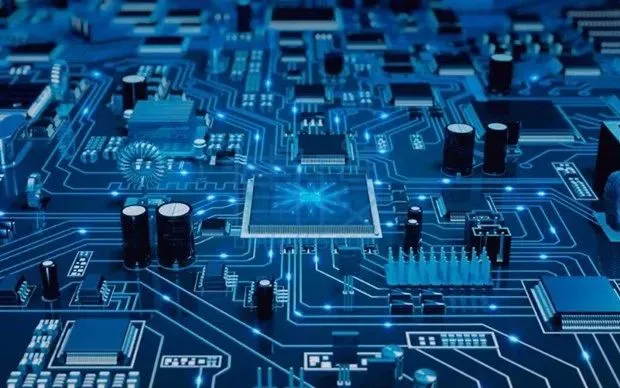
Prices of mature process memory, long hit by oversupply due to fast capacity expansion at Chinese makers, are expected to rebound, thanks to the Chinese government's consumption stimulus programs.
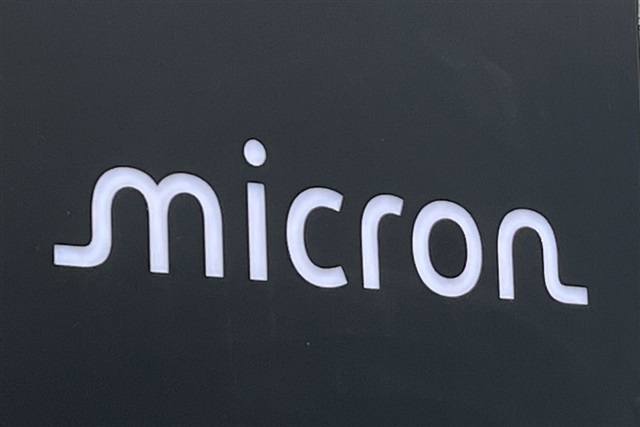
With the ongoing development of new-generation processors, the introduction of PCIe Gen5 specifications into high-end PC applications is set to commence in 2025. According to Micron Technology, Gen4 p
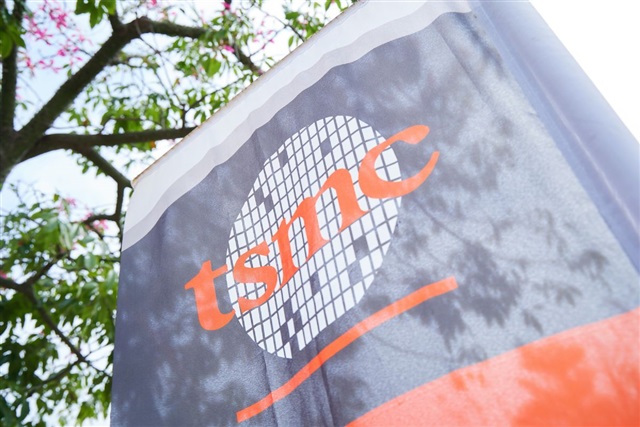
The global market is watching how TSMC, pressured by the US, might assist Intel's foundry operations, while Samsung Electronics and Rapidus, also facing challenges, may similarly require TSMC'